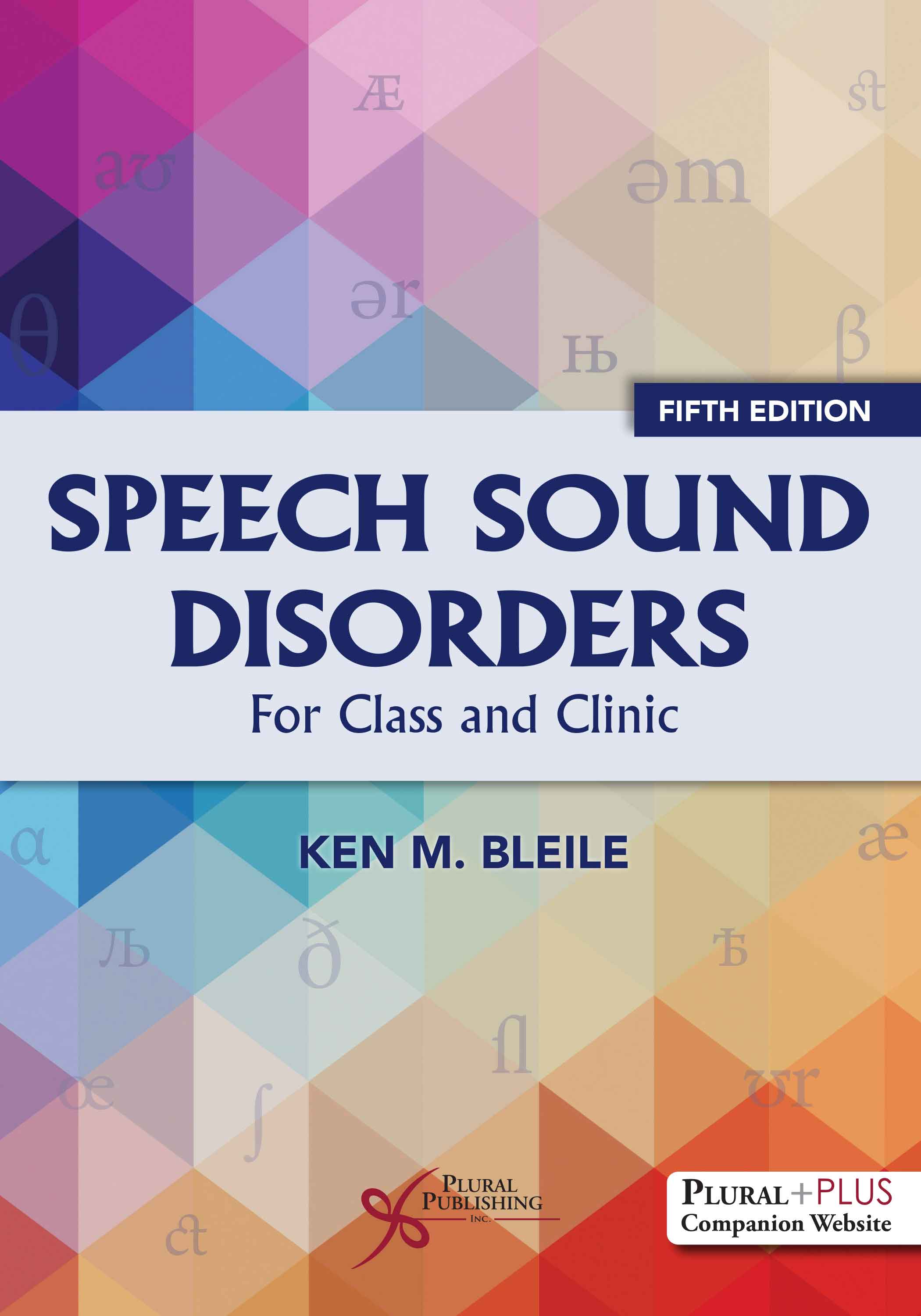
Speech Sound Disorders: For Class and Clinic
Fifth Edition
Ken M. Bleile
Details: 495 pages, B&W, Softcover, 7" x 10"
ISBN13: 978-1-63550-662-4
© 2025 | Available
For Instructors
Purchase
With three new chapters and updates throughout, Speech Sound Disorders: For Class and Clinic, Fifth Edition offers a readable and practical guide on the care of speech sound disorders. It emphasizes evidence-based principles and procedures that underlie almost all clinical approaches, making this an ideal textbook for a wide variety of undergraduate and graduate courses. The text is divided into four parts: Foundations, Speech Development, Assessment, and Treatment. Contributors supporting Ken E. Bleile’s longstanding text include Todd A. Bohnenkamp, Jaimie L. Gilbert, Samantha Ehler, Lindsey R. Squires, Blair M. Voigt, Carlin Hageman, and Evette Edmister.
Key Features
- Each chapter begins with learning objectives and key words, and ends with conclusions and review questions
- Readable and practical discussions of complex clinical topics
- Coverage of speech sound disorders from infants through adults
- Clear link between speech development and clinical decision making
- Emphasis on underlying principles and procedures
New to the Fifth Edition
- Three new chapters!
- Treatment Approaches by Blair M. Voigt
- Motor Learning by Carlin Hageman
- Late Sounds en Español by Lindsey R. Squires
- Updated developmental speech milestones incorporate the latest information from multiple languages
- Treatment Approaches by Blair M. Voigt
PluralPlus Online Ancillaries
For Instructors:
- PowerPoint slides with non-copyrighted pictures covering the main ideas in chapters
- A test bank with 200 objective questions with answers
- Answers for the exercises in the “learn by doing” chapters
For Students:
- Recordings that summarize main ideas in all the chapters written by the author
- Note helpers for chapters and recordings by the author
- Every recording concludes with 10 review questions of main ideas in the chapter
Assessment Resources:
- Questions to help assess social impact of communication
- Procedures to measure severity and intelligibility
- Lists of developmental milestones from infants through students
- Tools for informal speech assessments from toddlers through students
- A Selection of published tests
Treatment Resources:
- A 20-minute audio presentation on motor learning
- 15 brief narrated treatment videos of children with speech sound disorders
- Descriptions and demonstrations to help teach every consonant
- Over 100 phonetic placement and shaping exercises
- Hundreds of activities for infants, toddlers, preschoolers, and students to promote speech during play, in daily life and school, in reading, and in language
Preface
Companion Website Resources
Acknowledgments
Contributors
Dedication
Part I. Foundations
Chapter 1. A Speech Framework
The Dual Nature of Speech
Speech in Human Communication
Summary: Speech Framework
A Final Thought: Giving Back
Conclusions
Review of Main Ideas
References
Chapter 2. Speech Sound Disorders
What is a Speech Sound Disorder?
Why Study Speech Sound Disorders?
The Nature of Speech Sound Disorders
Will This Help Someone?
Conclusions
Review of Main Ideas
References
Chapter 3: Speech Production
Todd A. Bohnenkamp
Learning Objectives
Key Words
Speech in the Brain
Speech in the Muscles
Conclusions
Review of Main Ideas
References
Chapter 4. Speech Reception and Perception
Jaimie L. Gilbert
Introduction
Sound in the Air
Sound in the Ear
Sound in the Brain
Conclusions
Review of Main Ideas
References and Recommended Readings
Chapter 5. Phonetics Warm-Up
Transcription
International Phonetic Alphabet
Notations
Speech Exercises
Conclusions
References
Part II. Speech Development
Chapter 6. Infants
With Samantha Ehler
Speech Perception
Vocal Production
Summary: In a Word
Sound Communication
Conclusions
Review of Main Ideas
References
Chapter 7. Toddlers
Speech Perception
Speech Production
Summary: Puzzle Pieces
Sound Communication
Conclusions
Review of Main Ideas
References
Chapter 8. Preschoolers
Learning Objectives
Key Words
Speech Perception
Speech Production
Summary: A Challenge that Stretches
Sound Communication
Conclusions
Review of Main Ideas
References
Chapter 9. Students
Speech Perception
Speech Production
Summary: Speech Development in School
Sound Communication
Conclusions
Review of Main Ideas
References
Chapter 10. Speech Puzzles
Communication Strategies
Exercises
Conclusions
References
Part III. Assessment
Chapter 11. Speech Evaluation
Overview
Referral
History
Present Development
Clinical Decisions
Implementation
Conclusions
Review of Main Ideas
References
Appendix 11–A. Speech Evaluation Checklist
Appendix 11–B. Quick 11-Step Screener of Oral Structure and Function
Chapter 12. Assessing a Bilingual Child
Lindsey R. Squires
Introduction
Special Topics in Assessment
Conclusions
Review of Main Ideas
References
Appendix 12–A. Template for Evidence-Based Case History
Chapter 13. Hypothesis Testing
Optimal Settings and Otherwise
Test Methods
Speech Samples
Transcription
Conclusions
Review of Main Ideas
References
Appendix 13–A. Preventable Harm
Appendix 13–B. Elicitation
Chapter 14. Phonetic Inventories
Consonant Inventories
Exercises
Conclusions
References
Chapter 15. Phonological Patterns
Definitions
Exercises
Conclusions
References
Part IV. Treatment
Chapter 16. Developmental Goals
The Developmental Logic of Treatment
Stages in Speech Development
Developmental Speech Goals
Infants
Toddlers
Preschoolers
Students
Conclusions
Review of Main Ideas
References
Chapter 17. Treatment Sounds
Selecting a Treatment Sound
Establishing a Treatment Sound
Perception Training
Practicing Speech
Conclusions
Review of Main Ideas
References
Chapter 18. Treatment Approaches
Blair M. Voigt
Overview
Articulation Approaches
Minimal Pairs Approach
Cycles Approach
Multiple Oppositions Approach
Complexity Approach
Maximal Oppositions Approach
Core Vocabulary Intervention
Integrated Phonological Awareness Intervention
Conclusions
Review of Main Ideas
References
Chapter 19. Motor Learning
Carlin Hageman
Motor Skills
Motor Control
Principles of Motor Learning
Conclusions
Review of Main Ideas
References
Chapter 20. Late Sounds en Espanol
Lindsey R. Squires
Phonologies of English and Spanish: Differences and Similarities
Late Developing Sounds in Spanish
Treatment Strategies for Late Sounds en Español
[s]
[l]
Tap [r] and Trill [ɾ]
Conclusions
Review of Main Ideas
References
Chapter 21. Talking with Children
Parentese
Facilitative Talk
Therapy Talk
Conclusions
Review of Main Ideas
References
Chapter 22. Talking About Speech
Metaphors
Touch Cues
Descriptions and Demonstrations
Phonetic Placement and Shaping
Conclusions
Review of Main Ideas
References
Chapter 23. Supporting Communication
Evette Edmister
What is AAC?
Benefits of AAC
Treatment Strategies
Conclusions
Review of Main Ideas
References
Chapter 24. The Daily Researcher
Evaluating Treatment Approaches
Assessing Treatment Progress
Dynamic Assessment
Conclusions
Review of Main Ideas
References
Chapter 25. Sound Decisions
Definitions
Exercises
Conclusions
References
Appendix A: Special Symbols and Diacritics
Appendix B: Definitions
Index
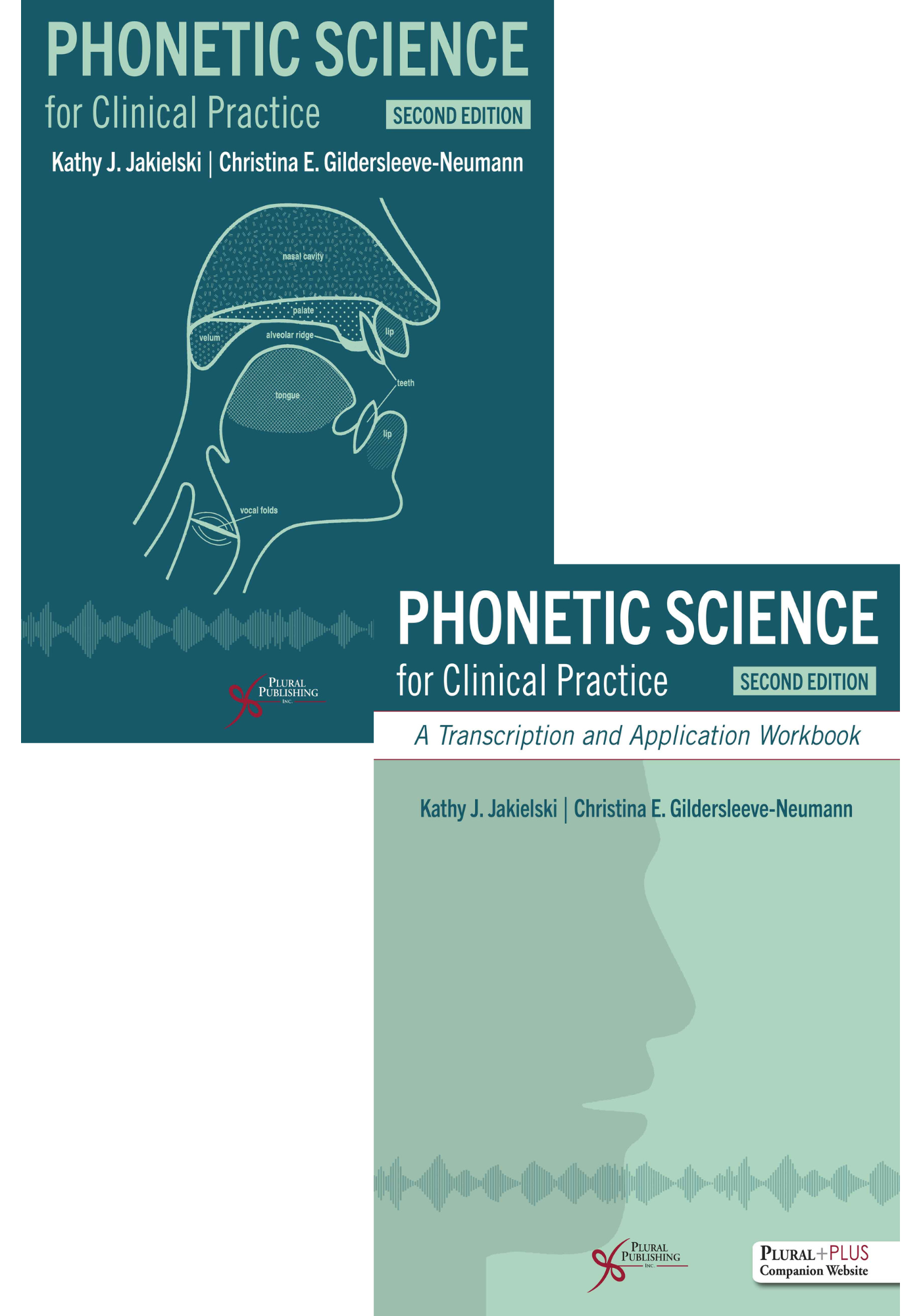
Phonetic Science for Clinical Practice Bundle (Textbook and Workbook)
This bundle includes the 'Phonetic Science for Clinical Practice, Second Edition textbook and companion transcription and application workbook. The books are intended to serve as an introductory, one-term resource for undergraduate phonetics courses in communication sciences and disorders.
The textbook begins by introducing the fundamental tool of transcription-the International Phonetic Alphabet-while also presenting the science underlying that set of symbols. The goal of this text is to teach students how to think about the data being transcribed-in other words, how to think like a phonetician. Every chapter begins with Learning Objectives and an Applied Science problem and question-a research- or clinical-based question that can be answered by applying the phonetic science concepts covered in that chapter. By the end of the chapter, students will revisit the question and be asked to solve the problem posed. Students studying communication sciences and disorders and practicing speech-language pathologists or audiologists will be more successful in their clinical work if they understand the science that underlies the tool of transcription. In each chapter there are also several diverse clinical examples to review the application of concepts covered.
The workbook allows students to practice phonetic transcription and includes a variety of practice exercises such as fill-in-the-blank, short-answer, and multiple creative transcription activities. The questions are closely connected to the textbook, allowing students to review chapter material and quiz themselves in an efficient manner.
Both books in the bundle come with access to supplementary materials on a PluralPlus companion website. See the inside front covers of each book for instructions.
Below are links to more information about each book.
Speech Sound Disorders: For Classroom and Clinic, Fifth Edition comes with access to supplementary student and instructor resources on a PluralPlus companion website.
The companion website is located at: https://www.pluralpublishing.com/publication/pss3e
STUDENTS:
The student resources include:
- Recordings that summarize the main ideas for each chapter
- 10 review questions per chapter recording
- Note helpers
- Assessment & Treatment resources
To access the student resources, you must register on the companion website and log in using the access code located in the front of your textbook.
INSTRUCTORS:
The instructor resources include:
- PowerPoint slides
- Test bank
- Answers for the exercises in the “learn by doing” chapters
You will also have access to all of the student resources listed above.
To access the instructor resources, you must contact Plural Publishing, Inc. to be verified as an instructor and receive your access code.
Email: instructormaterials@pluralpublishing.com
Tel: 866-758-7251 (toll free) or 858-492-1555
*Note for students: If you have purchased this textbook used or have rented it, your access code will not work if it was already redeemed by the original buyer of the book. Plural Publishing does not offer replacement access codes for used or rented textbooks.
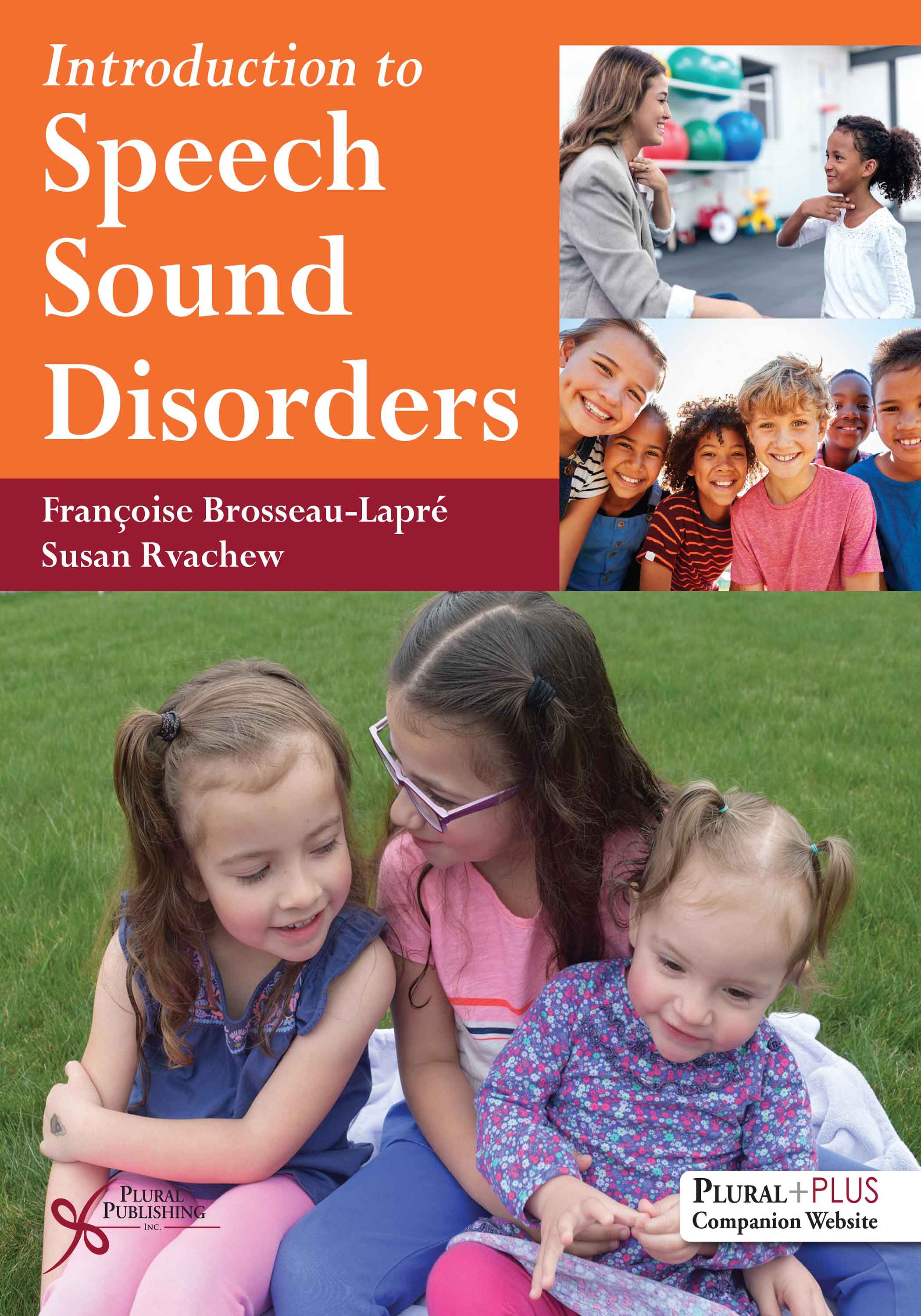
Introduction to Speech Sound Disorders
First Edition
Françoise Brosseau-Lapré, Susan Rvachew
Details: 295 pages, 2-Color, Softcover, 7" x 10"
ISBN13: 978-1-59756-803-6
© 2020 | Available
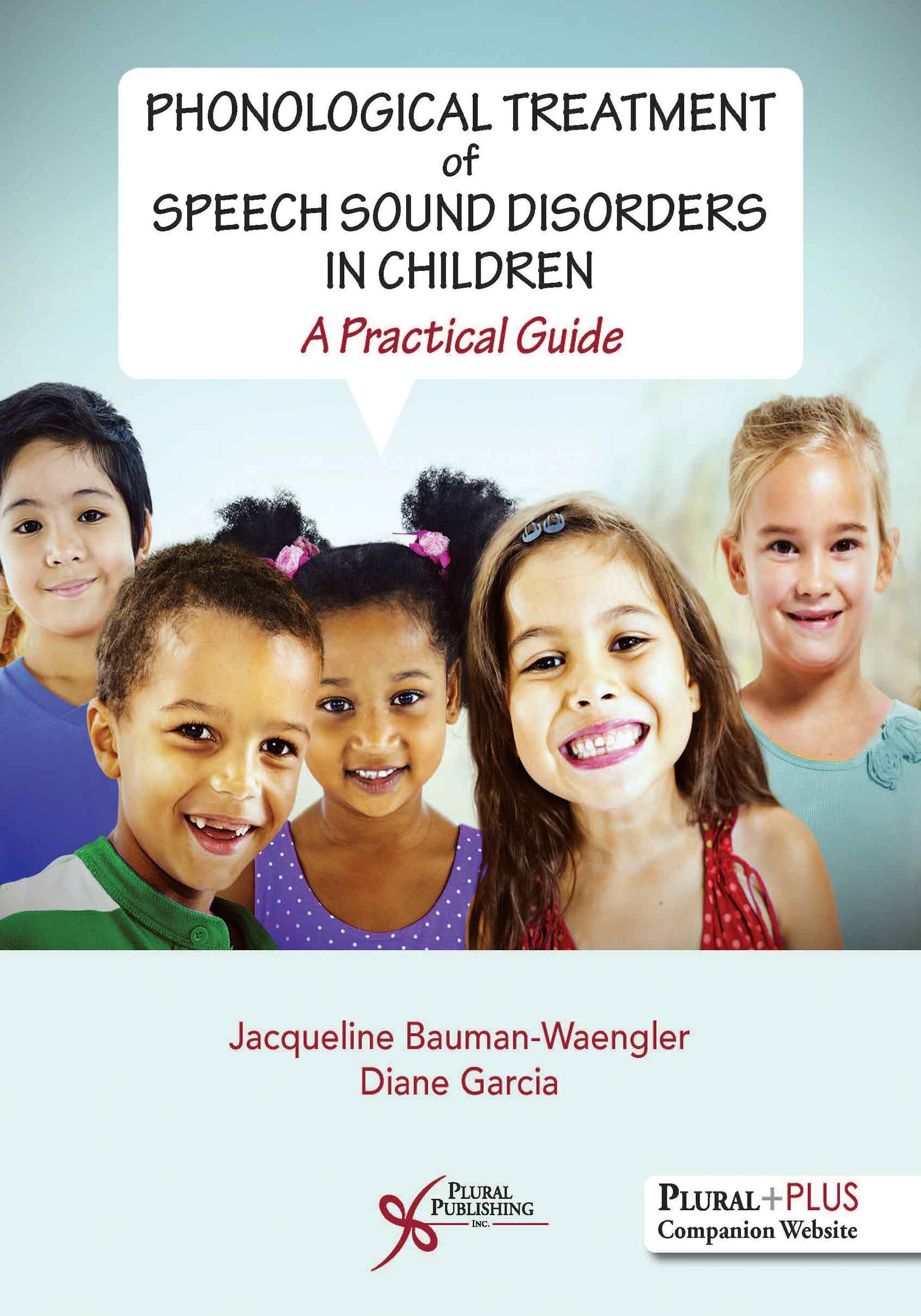
Phonological Treatment of Speech Sound Disorders in Children: A Practical Guide
First Edition
Jacqueline Bauman-Waengler, Diane Garcia
Details: 316 pages, B&W, Softcover, 8.5" x 11"
ISBN13: 978-1-63550-027-1
© 2019 | Available
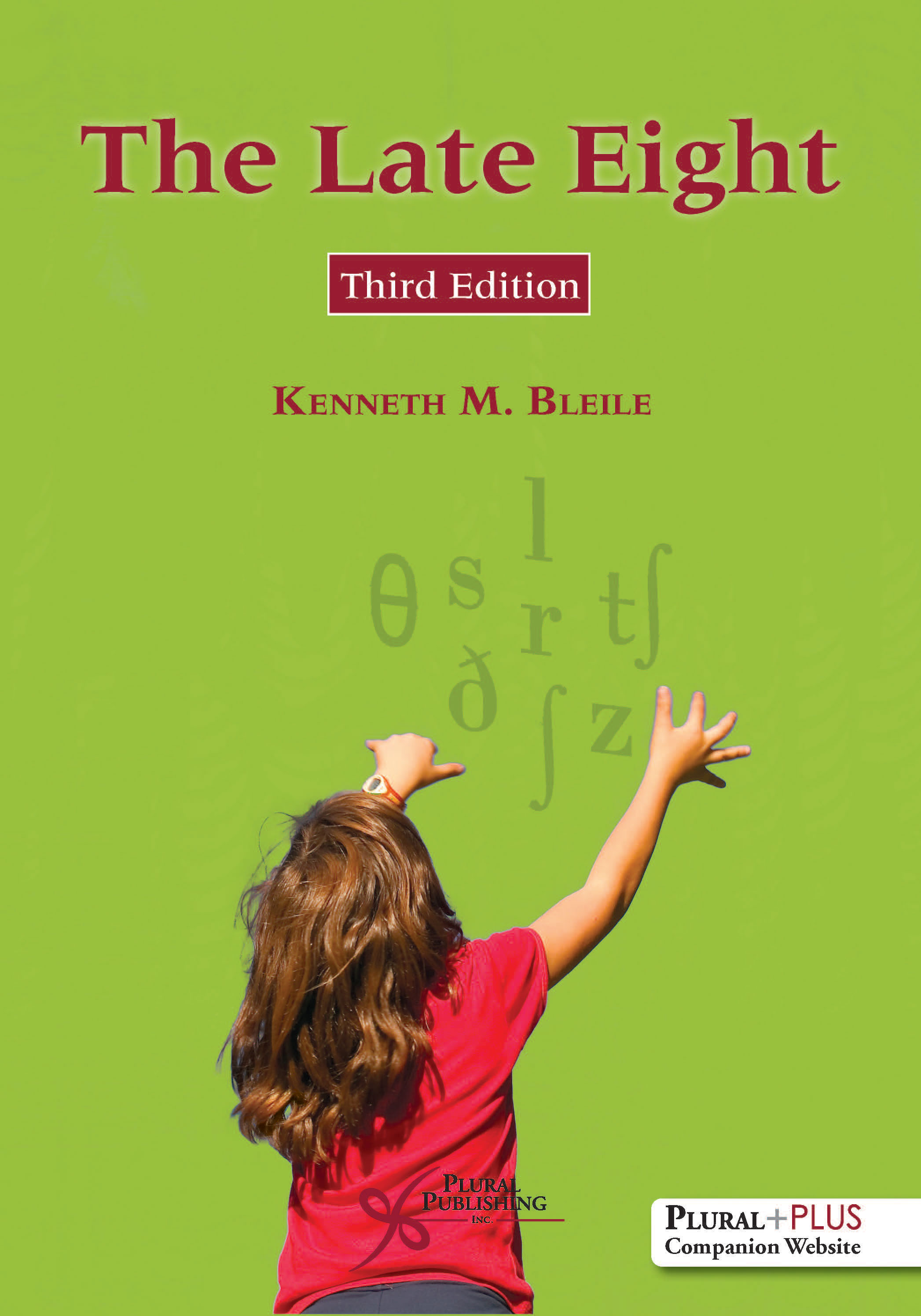
The Late Eight
Third Edition
Ken M. Bleile
Details: 467 pages, B&W, Softcover, 7" x 10"
ISBN13: 978-1-94488-303-4
© 2018 | Available
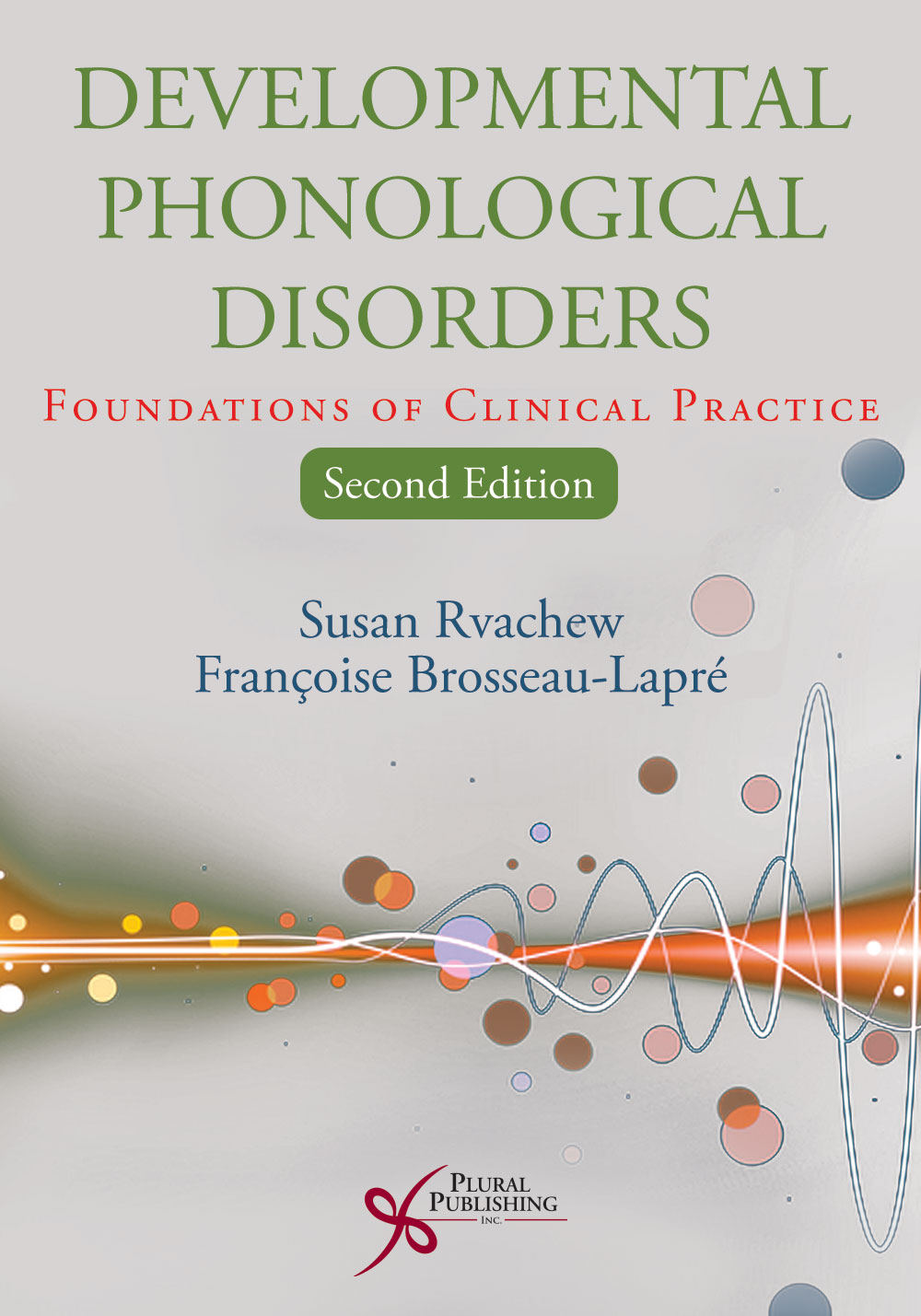
Developmental Phonological Disorders: Foundations of Clinical Practice
Second Edition
Susan Rvachew, Françoise Brosseau-Lapré
Details: 624 pages, B&W, Softcover, 8.5" x 11"
ISBN13: 978-1-59756-717-6
© 2018 | Available
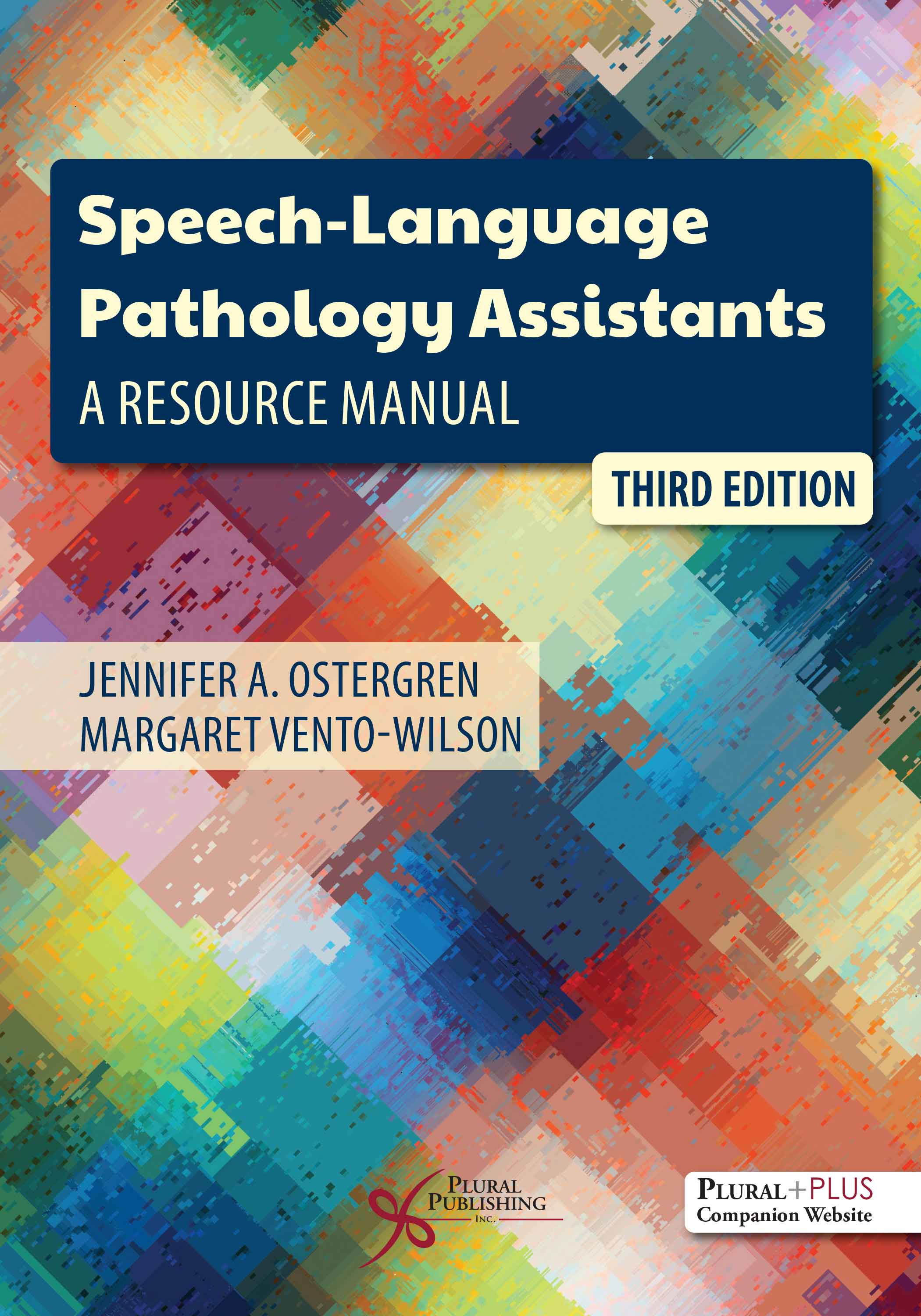
Speech-Language Pathology Assistants: A Resource Manual
Third Edition
Jennifer A. Ostergren, Margaret Vento-Wilson
Details: 612 pages, B&W, Softcover, 7" x 10"
ISBN13: 978-1-63550-415-6
© 2024 | Available
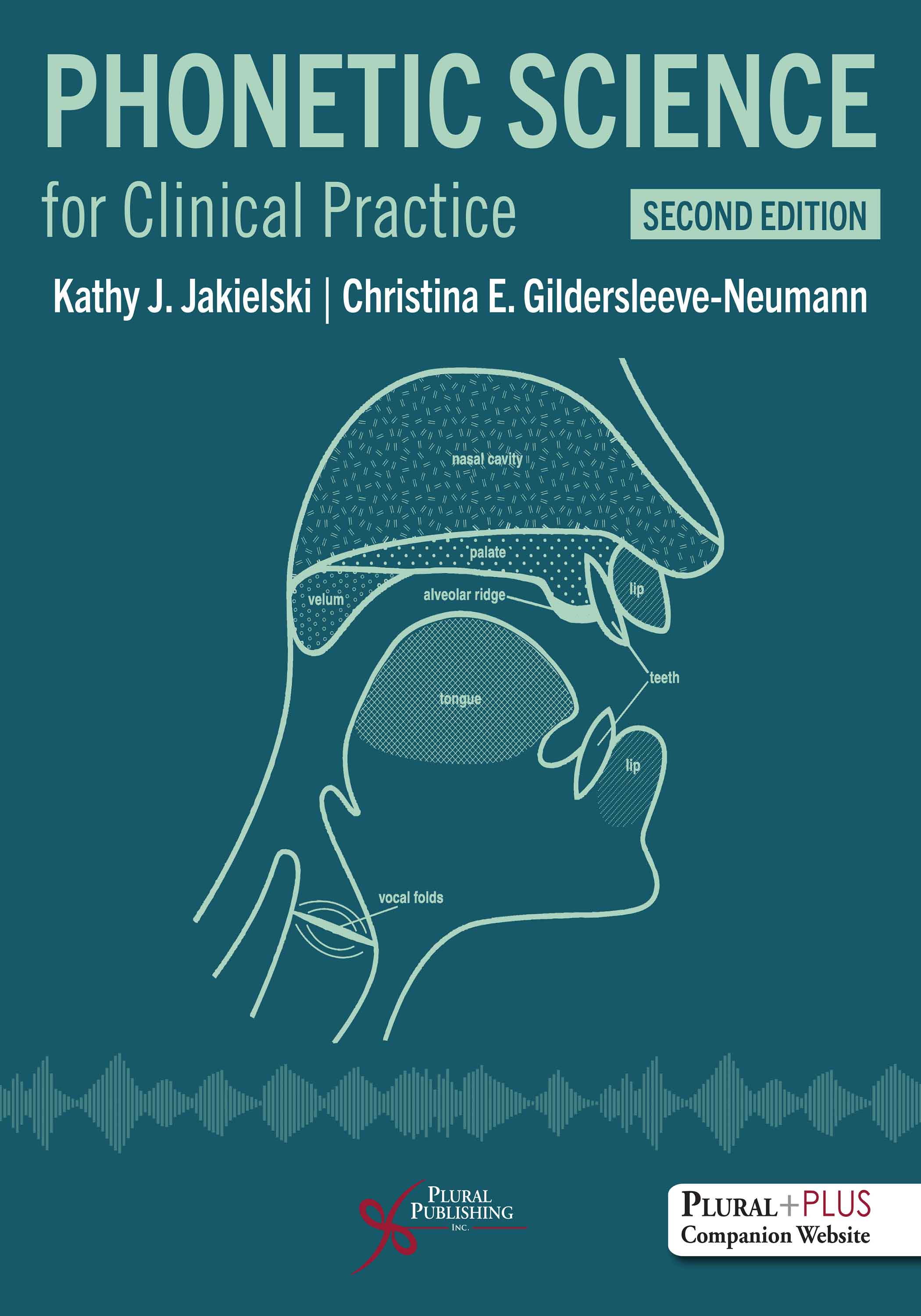
Phonetic Science for Clinical Practice
Second Edition
Kathy J. Jakielski, Christina Gildersleeve-Neumann
Details: 327 pages, Two-Color, Softcover, 8.5" x 11"
ISBN13: 978-1-63550-405-7
© 2025 | Available
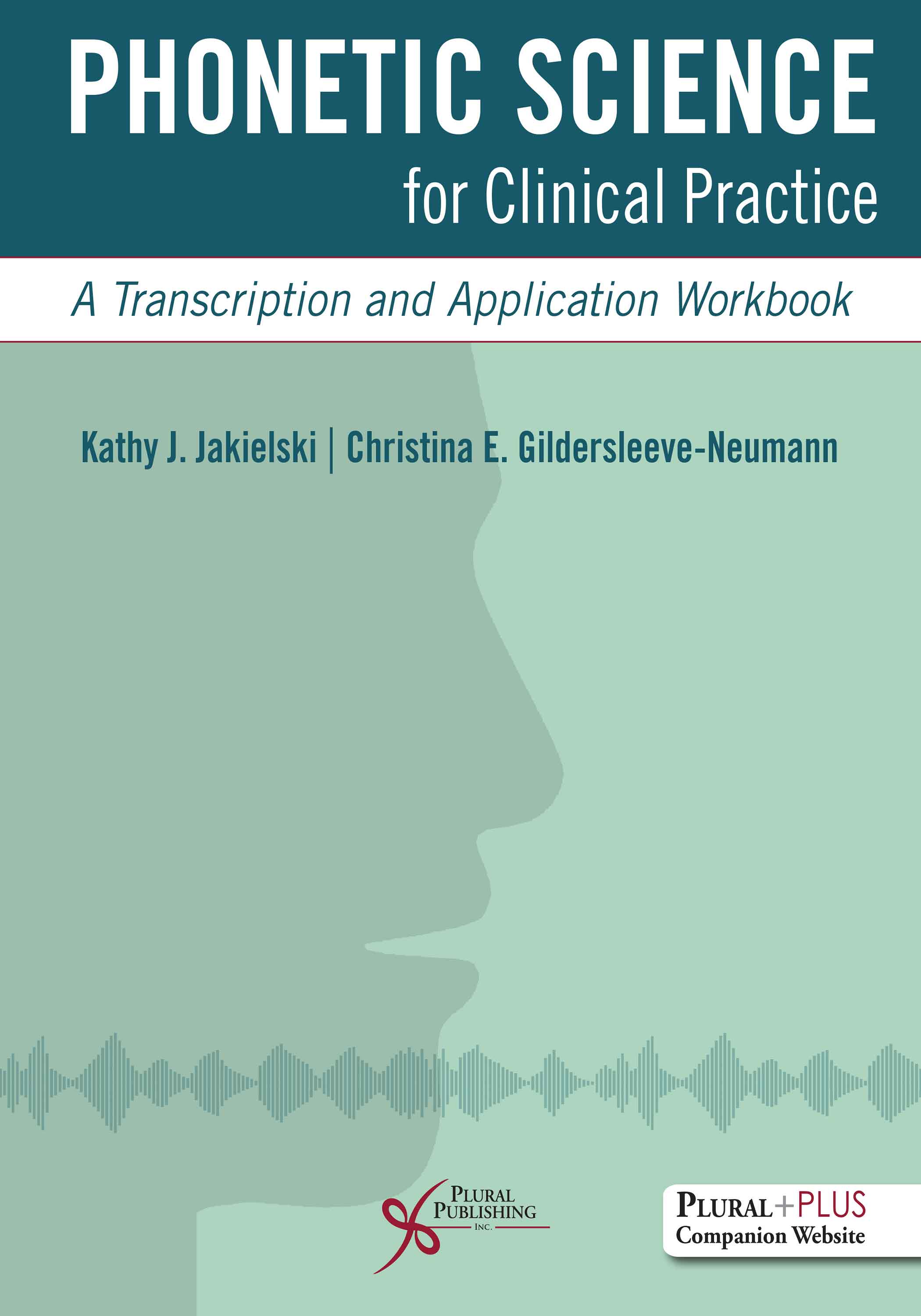
Phonetic Science for Clinical Practice: A Transcription and Application Workbook
Second Edition
Kathy J. Jakielski, Christina Gildersleeve-Neumann
Details: 378 pages, Two-Color, Spiral, 8.5" x 11"
ISBN13: 978-1-63550-407-1
© 2025 | Available
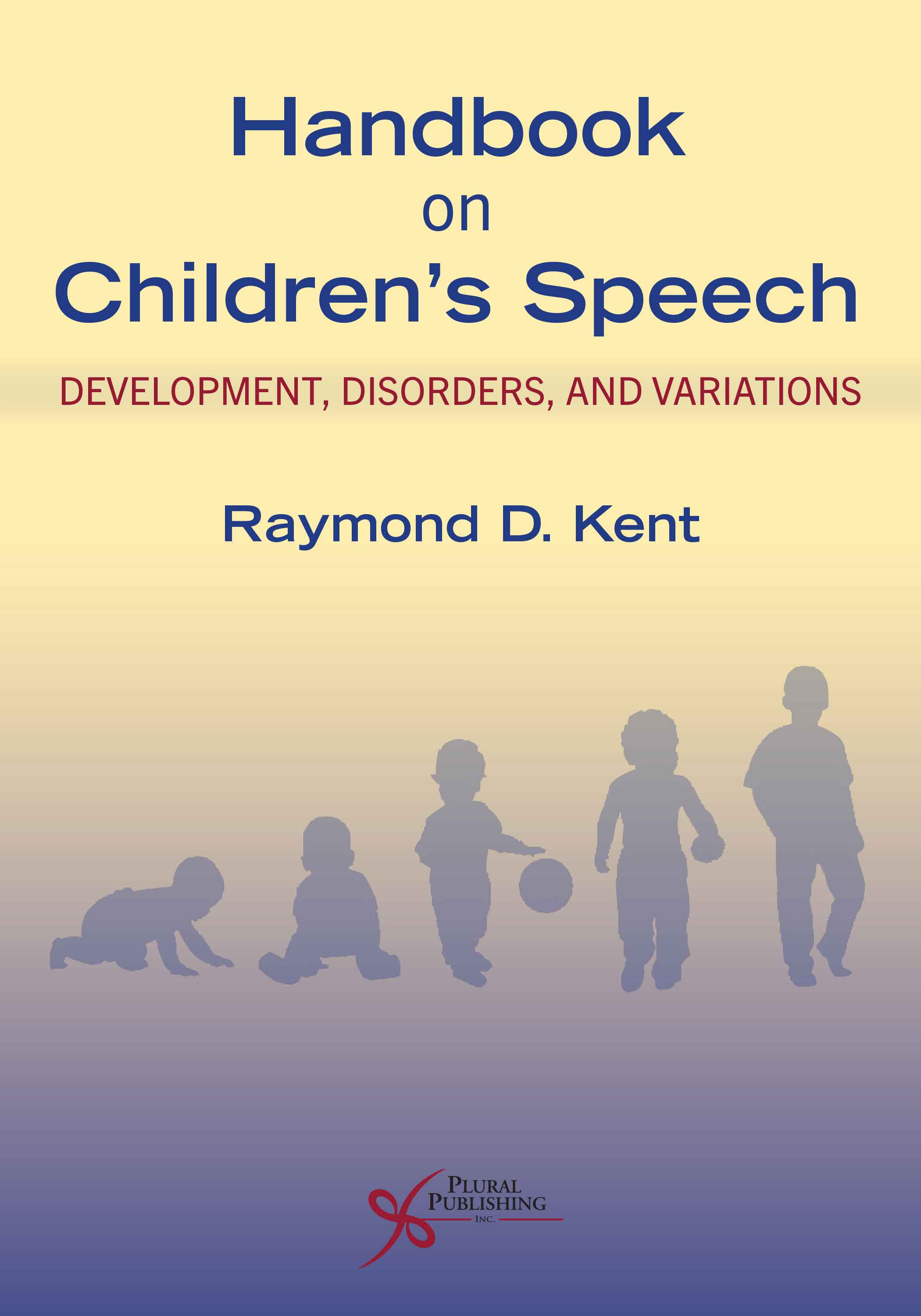
Handbook on Children's Speech: Development, Disorders, and Variations
First Edition
Raymond D. Kent
Details: 495 pages, B&W, Hardcover, 7" x 10"
ISBN13: 978-1-63550-620-4
© 2024 | Available

